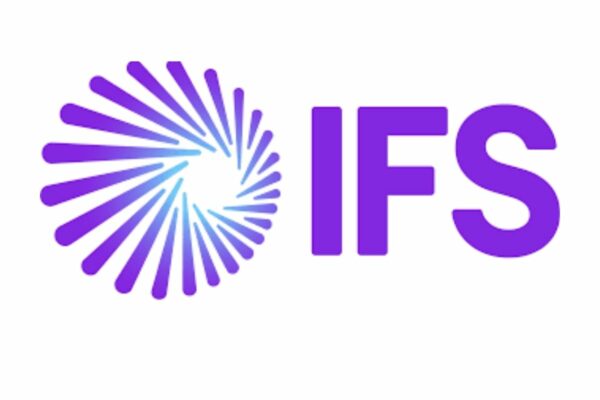Top 10 Best Enterprise Systems Companies in 2022

Top 10 best Enterprise Systems Companies in 2022.
An enterprise application, or EAS, is computer software intended to deal with the necessities of a company instead of its users. These entities are corporations and non-profit entities like educational institutions and clubs. a group of such programmes is thought as an enterprise system. As a component of a computer-based system, enterprise software to reinforce business and management reporting duties, these systems handle part of an organization’s activities.

1. Microsoft D365 enterprise
Microsoft D365, is now the on the top of the list. D365’s high rating may be primarily attributed to the fact that it offers two different solutions. Business Central may be used by small and mid-sized companies, while Larger and more complex organisations can use finance and Operations.
Additionally, Microsoft’s adaptability and user-friendly interface are combined with the two different systems to meet the varying needs of various types of businesses. Microsoft D365 is a more flexible platform than Oracle NetSuite or SAP S/4HANA.
Even while you can modify the D365 system, this does not indicate that you should. Firms often become bogged down in the implementation process because they over-customize the system. Our clients choose D365 over other ERP systems because of its ability to quickly integrate with other systems, as well as its familiar Microsoft look and feel.
The value-added reseller network of D365 is a nightmare, which is one of the disadvantages of using it. There are just too many options when it comes to service providers. They’re installing and marketing D365 regardless of whether or not they’ve had the required training and expertise. Microsoft has the least control and oversight over its reseller network among our top ten suppliers, which presents a significant obstacle in implementing the software.
Our list of the top Microsoft Dynamics 365 implementation partners includes Microsoft Dynamics 365, but you’ll want to look at all of your options when picking an implementation
2. Oracle NetSuite
Oracle It’s fantastic to see NetSuite, which ranked first on Internet, and now you’re back in the top two this year, and for good reason. NetSuite’s performance has deteriorated, but let’s concentrate on the positive aspects of the software for the time being.
Oracle NetSuite’s reputation as a pioneer in SaaS (software as a service) is one of its many benefits. In the cloud, there is a well-established solution that has been there for more than 20 years. It was built from the ground up with the cloud in mind, down to the most minor component.
The next logical step in their digital transformation may be to go from Quick Books or a basic accounting system to Net Suite for small and mid-market firms. Similarly, Net Suite focuses on small and medium-sized organisations.
Oracle Net Suite’s pricing is too high for small and medium-sized organisations. In the long term, the recurring subscription model, which includes many hidden costs, may wind up costing much more than planned.
Oracle Net Suite’s inability to take the top rank has been hampered by a growing number of issues. With Net Suite’s acquisition by Oracle, I believe they’ve been more aggressive in their pursuit of small and mid-market businesses, in addition to the larger ones. Oracle Net Suite seems to be out of its depth in some instances, depending on where they’re promoting it. Make sure you know if Oracle Net Suite is a good fit for your needs and that your evaluation is impartial.
3. Oracle ERP Cloud
According to our evaluation, Oracle ERP Cloud comes in third place among the finest cloud-based ERP systems on the market. Along with SAP, it’s considered a gold standard for more many Fortune 1000 firms. When comparing Oracle and SAP, it’s simpler to establish Oracle’s superiority since Oracle’s Cloud is more flexible than SAP Cloud. Unlike S/4HANA, this is significantly more customizable.
This implies that Oracle ERP Cloud also has to deal with many of the same issues as SAP, and the system still lacks advanced production capabilities. Even though Oracle ERP Cloud is an excellent fit for many sectors, especially those with more extensive, more diversified, and more progressive businesses, it is also a good solution for those who wish to interact with other systems quickly.
The last disadvantage of Oracle NetSuite is that it is not as flexible as other systems in the business. It is far more challenging to change NetSuite’s design than changing a Microsoft D365 or an Oracle ERP Cloud.
4. SAP S/4HANA
It’s SAP S/4HANA that comes in the fourth position. Some ranks have risen from last year’s rankings, primarily due to the success of S/4HANA, which was introduced several years ago, in the preceding several years.
S/4HANA’s core ERP capabilities, such as accounting and inventory management, are solid. Financial flexibility, GL capabilities, product pricing, are among the finest in the business.
Manufacturing, planning, product life cycle management, and even specific CRM capabilities are areas where S/4HANA falls short. Although it hasn’t realized its full potential yet, it will. Compared to SAP’s older legacy systems like ECC and R/3, the lack of maturity of this system is the primary cause of its delayed growth.
To address this issue, SAP has acquired several companies. Procurement and human resource management are among the products they’ve purchased from Ariba, Success Factors and Concur. As a result, if you want the best of both worlds, you’ll need to integrate many systems.
The SAP road map is still a little complex and unclear when determining which SAP solutions are ideal for you. I’m sure that SAP and S/4HANA will achieve their objectives, based on the company’s history and SAP’s track record in working with large, complex enterprise. As a result of the significant advancements made in the preceding two years, we’ve elevated SAP S/4HANA to the position of number 4 in our innovation rankings.

5. IFS
One product dominates our top five list because of its laser-like focus on a small range of challenges. Rather than striving to serve everyone, it tends to focus on industrial, manufacturing, and distribution enterprises. A lot of project and asset management, as well as maintenance and repair, is required by many businesses.
Restricted focus isn’t always a bad thing, but some alternatives can provide various features to meet the needs of many unique clients when we’re looking at a broad, general rating like this. It’s possible to put IFS at the top of your priority list if your organisation is likely to profit most from it.
Make sure that the product’s strengths and limitations align with your needs before you purchase it. Much of the firm’s resources are devoted to product development, and the company also devotes considerable resources to expanding its network of value-added resellers and implementation partners. Because of this investment, the company’s future is bright.
In comparison to other products, this one maybe a little more expensive. If IFS is a suitable fit for your requirements, we feel you can get more functionality for your money. The second main difficulty with IFS is that it is not well-known by many organisations.
While IFS has a significant European presence, they are aggressively expanding to get a greater share of the worldwide market. Because of this, IFS is not as well-known or as widely used as some of the other items in our top 10 list. So, IFS comes in at number five on our list.
6. Infor Cloud Suite
Infor Cloud Suite comes in sixth on our best cloud computing services. This product’s popularity has grown in the last year. The Infor Cloud Suite umbrella is pretty big and maybe deceiving since it encompasses several systems. There are aspects of other goods that they run with even if they seek to rebrand or rename the product CloudSuite.
Regularly, we see M3 and Infor Syteline in industrial environments, as well. Supply chain management software like Infor Nexus is also in our top ten list of the best systems available today. Infor CloudSuite has a wide range of solutions, and your unique requirements will determine the best one for you.
We find a wide variety of robust and adaptable business processes and capabilities with Infor CloudSuite. One illustration of how these technologies may be used in various situations is that even non-manufacturing companies have found success with Infor.
As a result of Koch Industries’ substantial investment in the company’s acquisition, the company possessed an abundance of R&D resources. One of the limitations of Infor is that it is tough to figure out which of these systems to combine to get the final result you want, like every other product in our top 10. Because of this, it’s critical to choose the appropriate solution for your requirements, whether that’s M3, Syteline, Nexus, or one of their other possibilities. Consequently, Infor CloudSuite is now our sixth-best choice.
7. Sage X3
Sage X3 has been rated lower in the list, although not because Sage X3 is less popular than before, but because other suppliers have made more significant advancements in their product. Despite these drawbacks, the Sage X3 core financial system is an outstanding choice for manufacturing and distribution businesses.
Sage X3 is a potential alternative to the more prominent ERP providers. However, a few issues with the programme need to be taken into account. Many factors prevent us from rating it among the top 10 products for large and complex organisations. If you are part of a more prominent, more sophisticated global firm, your demands may be surpassed.
In addition, the UI isn’t as professional or intuitive as some of the competitors. This means Sage X3 has been ranked seventh in our list of the best accounting software.
8. Odoo
On our list of the best open-source ERP systems, Odoo comes in at number eight. After being used effectively by several medium businesses, it has made its way into the top ten list. This is primarily due to the product’s entire usefulness and capabilities. However, when more modules and features are added, the cost of open-source software increases. In the long run, you may end up paying moreIf you don’t have a well-developed and mature IT team, Odoo may be a downside as well.
There is also the question of scalability when it comes to large corporations. Despite this, Odoo may be a good fit for smaller and mid-sized organisations, especially if you’re seeking a solution that provides maximum modularity and flexibility so that multiple aspects of your firm may be connected.
9. Salesforce/Financial Force
Salesforce is a good alternative for companies looking for a more adaptable and best-of-breed solution. Various systems and modules may be added as the firm grows. There is a disadvantage to this flexibility, which many companies feel raises the complexity and expense of implementation. Salesforce and Financial Force are at the bottom of our list because of the maintenance requirements they place on your IT personnel. A few examples of ERP-like products for financial reporting are Financial Force and Rootstock, both of which are built on Salesforce and both of which include manufacturing ERP elements.
10. Acumatica
As for Acumatica, it came in eighth. The emergence of Acumatica may be attributed in part to its ability to carve out a niche for itself in the market. The majority of their efforts are directed at manufacturing and distribution firms.
An unambiguous user interface is provided by the product. This pricing method will be especially beneficial to small and medium-sized firms. Manufacturers and distributors who produce low volumes but have a high-profit margin may find this to be an extremely cost-effective technique. Using a unique pricing structure, they charge based on the number of transactions they handle.
Having a lot of low-margin, high-volume products may not be a suitable fit. A modest volume of items with a high-profit margin, on the other hand, might save companies significant sums of money.
Private equity funds are investing in the product, which is a good sign for a rising product since private equity funds want to invest in rising goods. It is due to this mix of features that Acumatica ranks 10th on our list of the best ERP systems.
The top 10 is completed by CRM (Salesforce.com) and FICO (Financial Force.com) As a result of improvements made by competing manufacturers, As far as I can tell, it’s not that the product itself has changed or lost its appeal. For some, Salesforce is best known as an enterprise resource planning (ERP) platform, although this isn’t exactly true.

Conclusion:
These are the Top 10 top 10 Enterprise Systems Companies in 2022. You can simply contact them for softwares, which can help you to provide solution to integrate your business or organization.
Article Proofread & Published by Gauri Malhotra.




